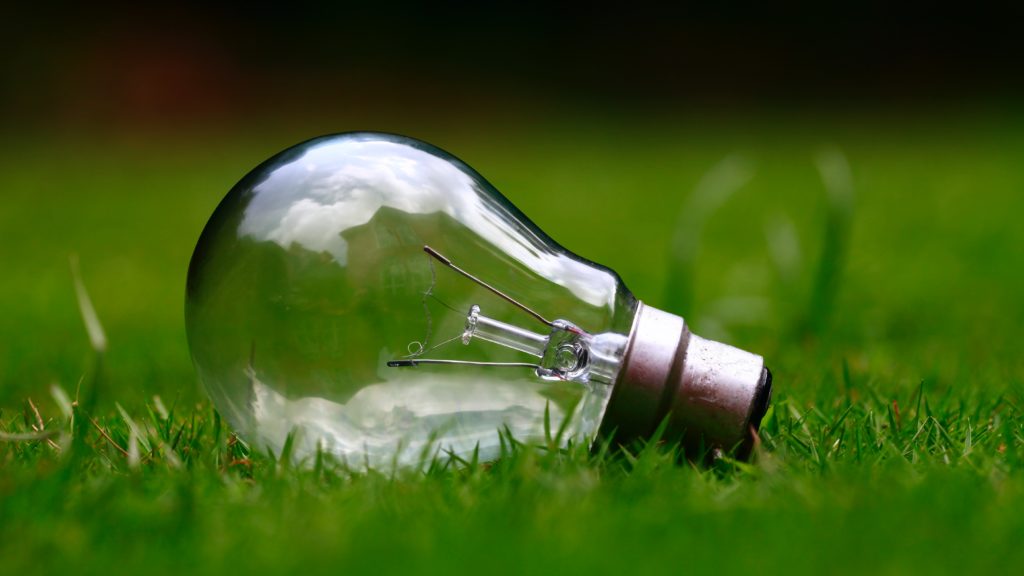ABC's of Recycling,
B – is for Bulbs
Jan 30 2022

What you need to know when it’s time to toss.
For over a hundred years, incandescent bulbs were the most common way to light our homes. Incandescents were invented in 1835. Thomas Edison patented his version of the light bulb in 1879, but he wasn’t the first.
Incandescent bulbs are fragile, don’t last very long—about 800-1000 hours, usually—and they need more electricity than modern bulbs. They also give off heat and can even cause fires. (I’m looking at you, old Easy-Bake Oven.)
The energy crisis of the 1970’s got scientists innovating, and new types of bulbs that use less energy were created. Spoiler alert: that doesn’t make them greener in ALL ways.
Nowadays, we have bulb choices which last longer and use less energy per lumen, or unit of light. But these bulbs can pose other environmental hazards when they end up in our landfill.
Know Your Bulbs and Toss With Care!
Always consider the type of bulb when it’s time to toss.
- Incandescent – the least energy efficient, this bulb goes into landfill garbage. On the bright-side, it contains no poisons.
- Halogen – improving on incandescent, halogens last twice as long and can be dimmed. Halogens can’t be recycled for the glass and metal due the fine wires inside. Dispose of in regular garbage or landfill.
- Fluorescent – the energy crisis of the 1970’s helped spur the creation of the more energy efficient fluorescent bulb. By the end of the 70’s, scientists had figured out how to bend the tube and the CFL was born. Bad news: ALL fluorescents contain mercury, which is dangerous neurotoxin. Never toss any fluorescent bulbs in your trash! Bring them to a local hazardous waste recycling facility.
- CFL (compact fluorescent) – CFLs use about 70% less energy than incandescent bulbs, but they contain mercury, which is dangerous when exposed. Bag these bulbs in a ziplock before recycling. Six states currently have laws requiring CFLs be recycled. Many Big Box stores (Home Depot, Menards, Ikea, etc.) accept CFLs for recycling. In our area, they can also be recycled at some community recycling events and monthly town collections, as well as local hazardous waste facilities.
- LED (Light emitting diode) – LEDs are 90% more efficient than incandescent. A good quality LED can last 30 times longer than an incandescent bulb. The good news is the glass and metal used in these bulbs can be recycled into new items. Bad news: they contain copper, lead, nickel, and silver which poison groundwater. Check your local Menards for LED collection options.
- UV (ultra violet) – The newest kind of bulb you might find around the house. UV bulbs project very little visible light. They are used to disinfect and detect biological matter, like pet waste or blood. Some homes have begun using UV bulbs in air filtering systems to remove allergens and water purification systems. Campers and travelers take UV bulb-fitted accessories to help clean drinking water. UV bulbs contain a liquid form of mercury. They should also be bagged before disposing at a hazardous waste collection. Some UVs are accepted by the hardware store where they were purchased or can be mailed back to the manufacturer.
It’s always a good idea to call ahead or check a local website before you show up at a store with bulbs to recycle.
Bulbs have come a long way since the candle and oil lamp days. They last longer and brighten our homes better than ever. But lightbulbs also add to our landfill, and sometimes contain dangerous chemicals. So, remember to respect the bulb!
And like Mom said, “Turn off the light when you leave the room!”